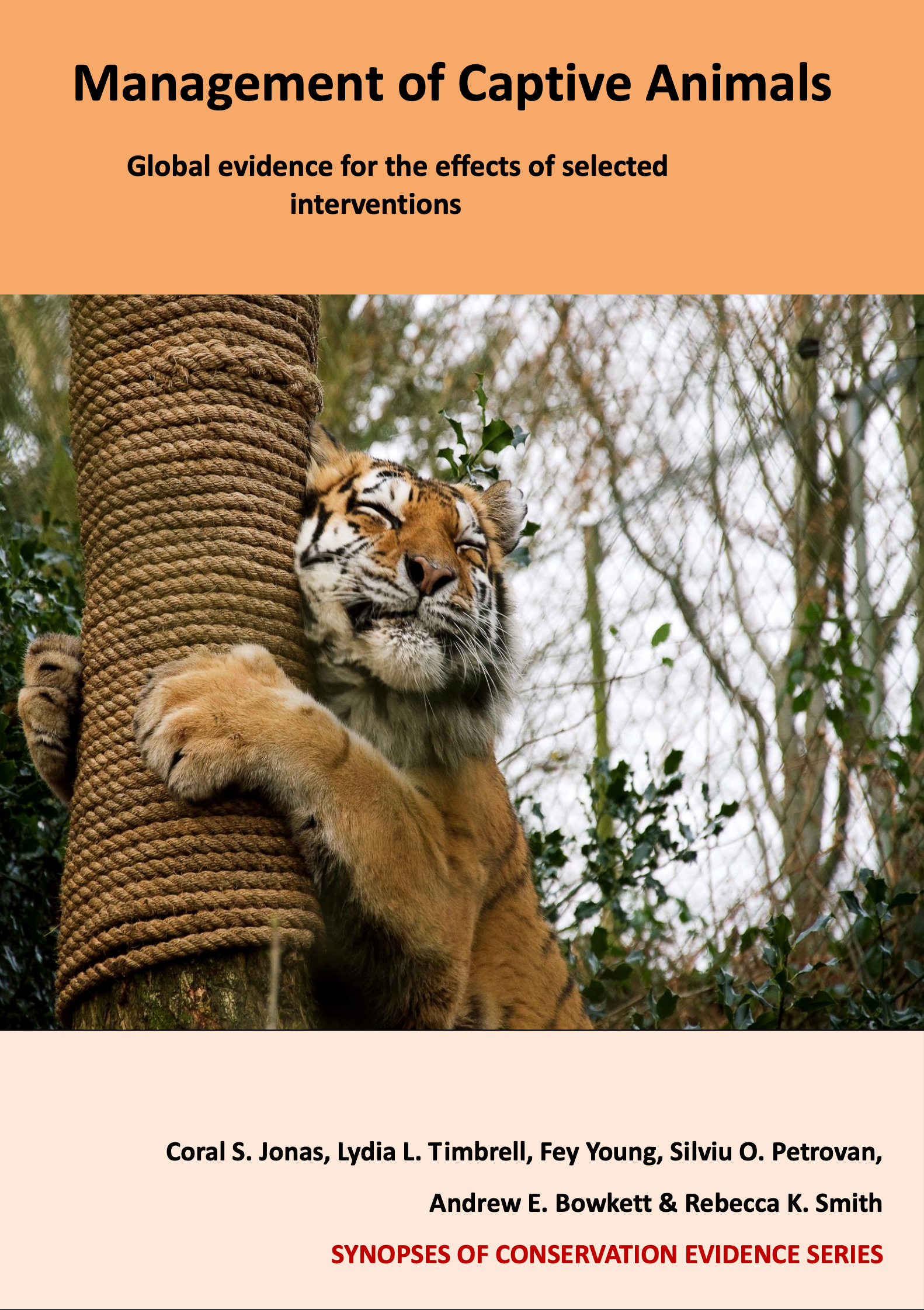Amphibians: Manipulate temperature of enclosure to improve development or survival to adulthood
-
Overall effectiveness category Trade-off between benefit and harms
-
Number of studies: 4
View assessment score
Hide assessment score
How is the evidence assessed?
-
Effectiveness
80% -
Certainty
58% -
Harms
20%
Study locations
Supporting evidence from individual studies
A replicated study in 1994-2004 in Spain found that larvae of fire salamanders Salamandra salamandra had higher survival rates with a low temperature and food three times per week compared to a higher temperature and food three times or once per week. No larvae on a high temperature-low food frequency treatment survived to metamorphosis. Larvae on high temperature-high food frequency diets had a significantly lower survival (72%) than those on low temperature-high food frequency treatment (98%) and low temperature-low food frequency treatment (98%). Recently born larvae were kept at one of two temperature treatments, 20–25°C (high temperature) or 15–18°C (low temperature) under a 12h:12h light-dark regime. Larvae were fed to near satiation either once a week (low food frequency) or three times a week (high food frequency) with frozen chironomid worms. This schedule defined four treatments: high temperature-high food, high temperature-low food, low temperature- high food, and low temperature-low food.
Study and other actions testedA replicated study in 2008–2011 in Cologne, Germany found that the growth rate and development stage reached by harlequin toad Atelopus flavescens larvae was faster at a higher constant temperature rather than a lower and varied water temperature, although no statistical tests were carried out. Tadpoles kept at a steady temperature of 24°C reached development stage (Gosner scale) 41 (which includes increases in length, mouthpart development and disappearance of the tail) in 100 days. Those kept at varying temperatures of 22-24°C took longer to reach the same stage (106-130 days). Delayed metamorphosis may be beneficial or detrimental to survival depending on the relative risk associated with different habitats. The tadpoles were from two reproduction events in December 2010 and January 2011.
Study and other actions testedA replicated study in 1998 of captive great barred frogs Mixophyes fasciolatus at Melbourne Zoo, Australia found that tadpoles took longer to reach metamorphosis when kept at lower temperatures. Lower temperatures resulted in later metamorphosis (16-20°C: 120–132 days; 18-22°C: 80 days; 19–22°C: 99–108 days), although no statistical tests were carried out. Delayed metamorphosis may be beneficial or detrimental to survival depending on the relative risk associated with different habitats. Five groups of 75 tadpoles were housed in five separate tanks, two groups kept at kept at 19-22°C, two groups kept at 16-20°C, and one group kept at 18-22°C.
Study and other actions testedA replicated study in 2014 in Shiraz, Iran found that developing eggs of green frog Bufotes viridis had higher survival rates, higher growth rates and lower abnormalities when reared in temperatures from 12 to 25°C, than those reared outside this range. Survival at different temperatures was as follows: 0°C = 50%, 2°C = 60%, 8°C = 75%, 12-25°C = 95-100%, 30°C = 75%, 33°C = 65%, 37°C = 50%, 40°C = 0%. Embryos developing at different temperatures (8, 15, 18, 25, and 30°C) showed a significant difference in the time required to reach development stage 25. At 8°C, eggs had developed to stage 25 after 280 hours, but after only 52 hours at 30°C. In a separate experiment, eggs reared at 0°C and 40°C exhibited no development and no embryos survived. A thermostat-controlled aquarium housed 18 chambers, starting with 150 eggs each, across a temperature gradient with a heater at one end and a chilling unit at the other.
Study and other actions tested
Where has this evidence come from?
List of journals searched by synopsis
All the journals searched for all synopses
This Action forms part of the Action Synopsis:
Management of Captive Animals
Management of Captive Animals - Published 2018
Captive Animal Synopsis





)_2023.JPG)














